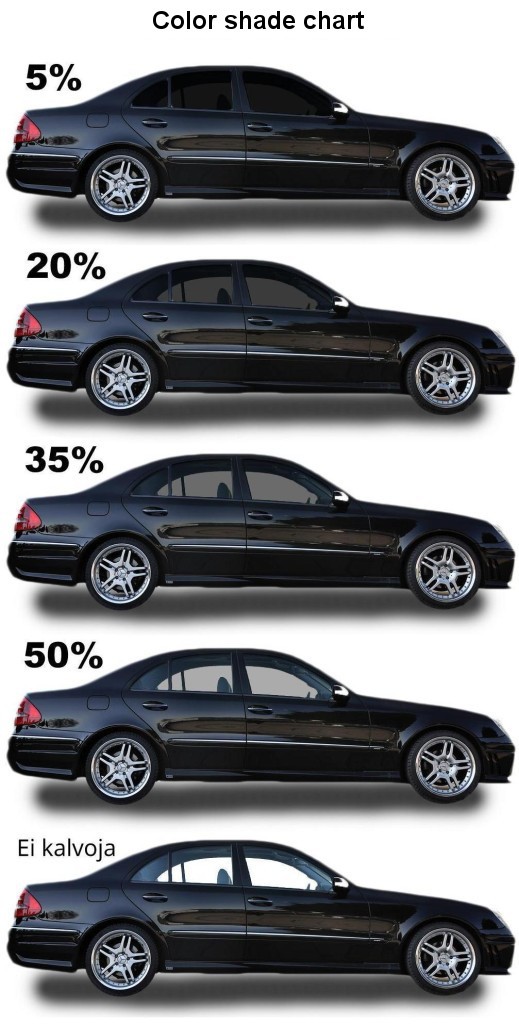Vehicle Window Tinting for Warm Reduction and Power Effectiveness
Vehicle Window Tinting for Warm Reduction and Power Effectiveness
Blog Article
Home Window Tinting Laws and Standards: What You Required to Know Prior To Tinting Your Auto
Prior to continuing with window tinting for your lorry, it is vital to familiarize yourself with the diverse regulations and guidelines that regulate this practice throughout different states. These laws dictate the allowable levels of color darkness, usually gauged by noticeable light transmission (VLT) percents, and include certain specifications for front windshields intended at making sure roadway safety and security.
Introduction of Home Window Tinting Rules
Window tinting laws are often based on variation across various jurisdictions, showing local regulations and security considerations. These laws determine the permissible levels of color darkness and reflectiveness on lorry home windows, guaranteeing that vehicle drivers preserve sufficient presence while also shielding against damaging UV rays and warmth.
Most policies identify home window tinting based on the Visible Light Transmission (VLT) portion, which indicates the amount of light that can pass with the home window. Generally, lower VLT percentages symbolize darker colors. Legislations typically differentiate in between the front, side, and back windows, with stricter restrictions used to the front windscreen to enhance safety and security for both the vehicle driver and various other road users.
Conformity with home window tinting policies is vital, as violations can result in fines, compulsory elimination of the color, and prospective increases in insurance coverage costs. It is vital for car proprietors to acquaint themselves with local laws prior to continuing with home window tinting installments.
State-by-State Tint Laws
Understanding the details window tinting policies in each state is essential for vehicle owners looking for to conform with the legislation. Each state in the united state has developed its very own collection of policies controling home window tinting, which can vary considerably. These laws frequently dictate the allowed degrees of color darkness, the types of home windows that can be tinted, and any type of medical exceptions that may apply.
For instance, states like The golden state have strict limitations on tint darkness for front windows, while others, such as New Mexico, might allow darker colors. Additionally, certain states mandate specific visibility percents for numerous windows, consisting of the windshield, front side windows, and rear windows. It is critical for automobile proprietors to acquaint themselves with their state's laws to stay clear of prospective penalties or fines.
In addition, some states might need an accreditation sticker to be put on tinted windows, showing conformity with state laws. Failure to stick to these guidelines not only takes the chance of lawful effects yet can likewise affect safety and visibility while driving. Consequently, car proprietors ought to perform extensive study or speak with neighborhood authorities to ensure complete understanding and compliance with state-by-state color laws.
Allowed Tint Degrees and Types
Lots of lorry proprietors may be shocked to discover that permitted tint degrees and kinds differ commonly across various states. Each state has established its very own policies concerning the permissible darkness and reflectivity of home window color, commonly determined by Visible Light Transmission (VLT) portions. VLT refers to the amount of light that can pass via the colored home windows; thus, a reduced percentage suggests a darker tint.

Moreover, the types of tint materials allowed can vary, with some states forbiding metallic or mirror-like surfaces. It is essential for automobile proprietors to acquaint themselves with their state's certain laws to make sure compliance. Non-compliance can result in penalties, mandatory removal of the color, or various other lawful repercussions, making official source it crucial to comprehend these policies before waging installation.
Medical Exemptions for Tinting
While not all states offer allowances for medical exceptions pertaining to home window tinting, those that do recognize the need for details people to improve exposure and convenience because of medical problems. Numerous medical conditions, such as lupus, skin cancer, and specific eye disorders, can make people particularly sensitive to sunshine. Subsequently, these people might call for darker colors to safeguard themselves from dangerous UV rays and glow.

It is essential to keep in mind that despite a clinical exemption, there might still be restrictions on the degree of tint enabled. Compliance with state legislations makes sure that individuals are both safeguarded and within lawful limits. Those taking into consideration clinical exceptions ought to contact their neighborhood Department of Electric motor Autos or comparable authority to comprehend the requirements and treatments needed to get an exception effectively.
Charges for Non-Compliance
Falling short to follow home window tinting laws can lead to significant penalties, which vary by state. Police are empowered to issue citations for vehicles that do not adhere to the defined tinting policies. These fines commonly consist of penalties, which can vary from small total up to several hundred dollars, depending on the severity of the infraction and the state concerned.
In some jurisdictions, repeated offenses might lead to intensifying fines or extra fines, such as mandatory court looks. Furthermore, non-compliance might require the elimination of illegal tinting, often at the proprietor's expense. In severe situations, regular transgressors might encounter suspension of their automobile registration up until conformity is accomplished.
Additionally, insurance effects might arise from receiving multiple citations for home window color offenses. Insurance providers might see such violations as a sign of riskier behavior, potentially causing increased premiums or problem in insurance coverage.
To avoid these fines, it is vital for vehicle owners to familiarize here are the findings themselves with their regional home window tinting legislations and ensure that their lorry complies (Window Tinting). This proactive technique not only avoids legal ramifications however additionally promotes road safety and security
Verdict

Most regulations categorize home window tinting based on the Visible Light Transmission (VLT) percent, which suggests the quantity of light that can pass through the home window. Compliance with home window tinting guidelines is critical, as infractions can result in fines, mandatory elimination of the tint, and possible increases in insurance policy costs.Comprehending the particular window tinting laws in each state is essential for car owners seeking to comply with the legislation. These policies commonly dictate the allowed degrees of tint darkness, the kinds of home windows that can be tinted, and any type of medical exemptions that may use.
For instance, states like The golden state have rigorous constraints on tint darkness for front home windows, while others, such as New Mexico, might enable darker colors.
Report this page